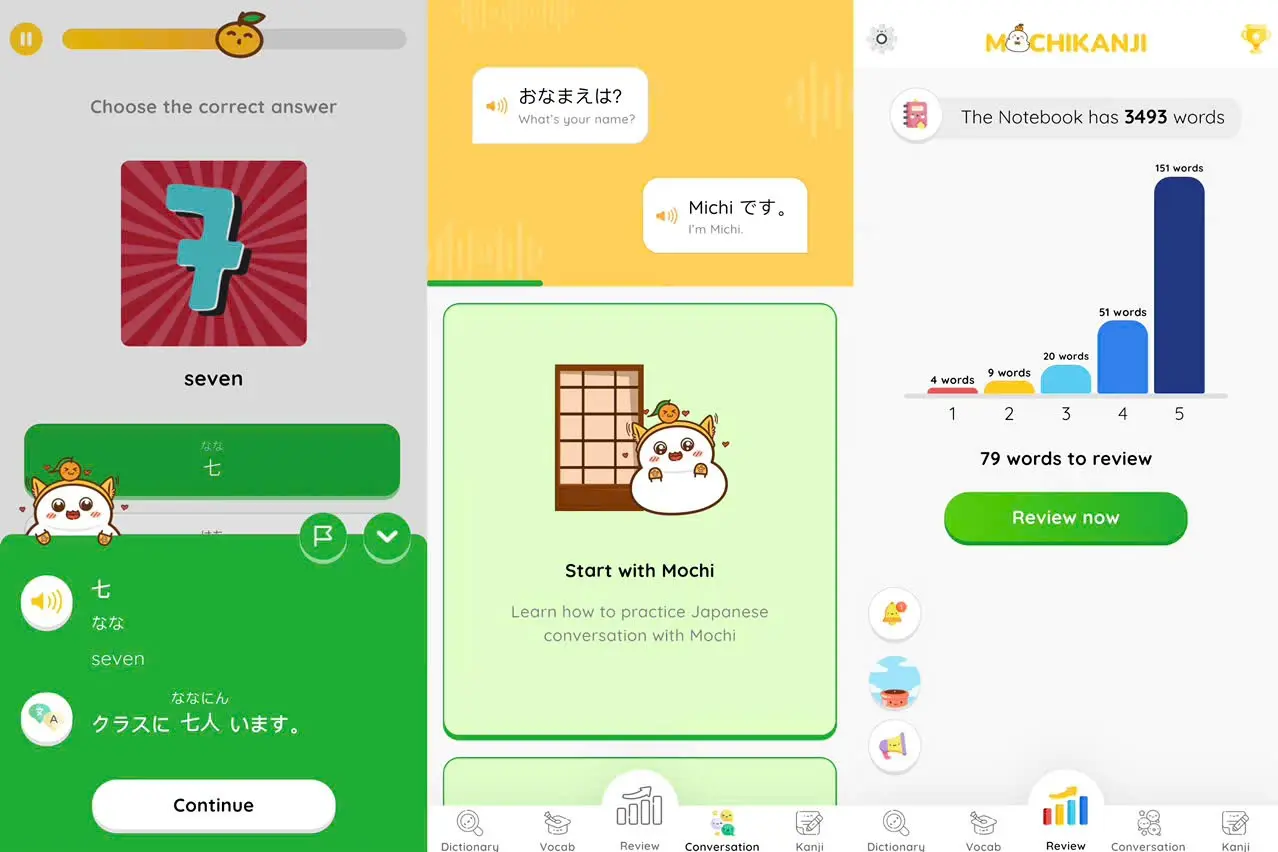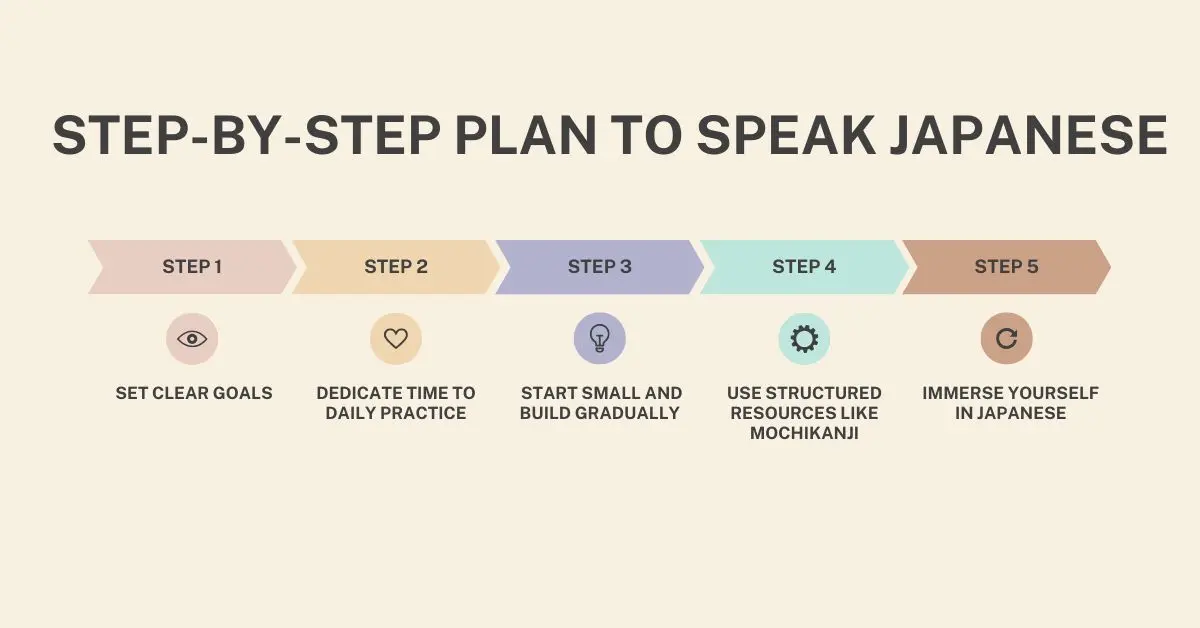Japanese is a language of beauty, culture, and connection. It allows you to dive into the heart of Japan’s traditions, engage with its people, and explore a world of art, technology, and entertainment. Whether you want to enjoy anime without subtitles, communicate during a trip to Japan, or unlock new career opportunities, speaking Japanese can be life-changing.
While the journey may seem challenging, with the right approach and dedication, you can master Japanese step by step. Let’s explore how to start and progress on this exciting path.
Why Should You Learn to Speak Japanese?
There are countless reasons to learn Japanese:
- Cultural Connection: Japan has a rich history, unique traditions, and globally loved media like anime, manga, and J-pop. Speaking the language brings you closer to understanding its nuances.
- Travel Made Easy: Japan’s incredible landscapes, from bustling cities to serene temples, are best experienced when you can interact with locals.
- Professional Opportunities: With Japan being a global leader in industries like technology and business, learning Japanese can give you a competitive edge in your career.
- Cognitive Benefits: Learning a new language sharpens your mind, improves memory, and boosts multitasking skills.
No matter your motivation, learning Japanese is an investment in both personal and professional growth.
Master the Basics of Speaking Japanese
Learn the Japanese Writing Systems
To speak Japanese effectively, you first need to understand its three writing systems:
- Hiragana: A phonetic alphabet for native Japanese words and grammar. Example: あ (a), い (i).
- Katakana: Used for foreign words, names, and technical terms. Example: ア (a), イ (i).
- Kanji: Represents ideas or objects. Example: 山 (yama – mountain), 水 (mizu – water).
Start with Hiragana and Katakana, as they form the foundation for reading and pronunciation. Gradually move to Kanji as your vocabulary grows.
1. Build a Core Vocabulary
Begin with essential words and phrases:
- Greetings: こんにちは (Konnichiwa – Hello), おはよう (Ohayou – Good morning).
- Numbers: 一 (Ichi – One), 五 (Go – Five).
- Common Verbs: 食べる (Taberu – To eat), 行く (Iku – To go).
Daily practice helps reinforce these words. Use flashcards or mobile apps to review regularly.
2. Practice Pronunciation
Japanese pronunciation is relatively simple but requires attention to detail. For example:
- Vowels are short and consistent. A is pronounced like “ah,” and I like “ee.”
- Watch for double consonants, such as in がっこう (gakkou – school).
Practice speaking aloud and mimic native speakers through listening exercises.
3. Learn Basic Grammar and Sentence Structure
Japanese grammar relies on clear rules:
- Sentence order: Subject-Object-Verb. Example: 私は本を読みます (Watashi wa hon o yomimasu – I read a book).
- Particles like は (wa) and を (o) indicate grammatical roles.
Start with simple sentences, then gradually add complexity with conjugations and polite forms.
Develop Speaking Skills Through Practice
1. Use Language Exchange Platforms
Join language exchange communities like HelloTalk or Tandem. Engaging with native speakers helps you practice real conversations and learn cultural nuances.
2. Practice with Japanese Media
Japanese media is a treasure trove for learners. Watch shows, listen to music, or follow YouTube channels in Japanese. Repeat phrases to match native intonation and rhythm. For instance:
- Listen to a sentence in anime, pause, and repeat.
- Try shadowing podcasts like “JapanesePod101.”
3. Create a Japanese-Speaking Environment
Immerse yourself in Japanese wherever possible:
- Label household items with their Japanese names (e.g., 冷蔵庫 reizoko for refrigerator).
- Think in Japanese while performing daily tasks.
- Join local or online language meetups to practice regularly.
Learning with MochiKanji
MochiKanji’s conversation practice course is designed to help learners confidently communicate in Japanese through real-life dialogues. The course covers essential phrases and expressions for everyday situations, such as greetings, shopping, and traveling, ensuring practical application. Each lesson integrates native speaker audio for accurate pronunciation and intonation, along with interactive activities to reinforce understanding.
Combined with the Golden Time feature, learners review key phrases at optimal intervals for long-term retention. Additionally, interactive flashcards with visuals and sounds enhance memory and make practicing vocabulary engaging. This comprehensive approach ensures that you not only memorize phrases but also gain the confidence to use them naturally in conversations.
Step-by-Step Plan to Speak Japanese
Step 1: Set Clear Goals
Before you begin learning Japanese, take the time to define your objectives. Are you aiming to:
- Engage in basic conversations with native speakers?
- Achieve fluency for professional or personal purposes?
- Pass a specific proficiency test like the JLPT (Japanese Language Proficiency Test)?
Having clear goals will help you stay motivated and tailor your learning methods. For example, if your goal is conversational Japanese, focus on speaking and listening. If you’re targeting JLPT, prioritize grammar, kanji, and reading comprehension.
Step 2: Dedicate Time to Daily Practice
Consistency is the secret to mastering any language, and Japanese is no exception. Set aside at least 30 minutes daily for focused practice. Divide your time effectively:
- 10 minutes: Listening to Japanese podcasts or dialogues.
- 10 minutes: Practicing speaking aloud, such as repeating phrases or using flashcards.
- 10 minutes: Reviewing vocabulary and grammar.
Even a short, daily routine can lead to significant progress over time. Gradually increase your study time as your familiarity with the language grows.
Step 3: Start Small and Build Gradually
Jumping into complex sentences too early can feel overwhelming. Instead, begin with the basics:
- Start with greetings and introductions like “こんにちは” (Konnichiwa – Hello) or “はじめまして” (Hajimemashite – Nice to meet you).
- Practice constructing simple sentences like “これはペンです” (Kore wa pen desu – This is a pen).
- Once comfortable, move to everyday phrases and expand your vocabulary, focusing on topics like shopping, dining, or directions.
Gradual progression allows you to build confidence while solidifying your foundation.
Step 4: Use Structured Resources Like MochiKanji
Structured tools and apps, such as MochiKanji, can streamline your learning journey. These platforms provide:
- Organized lesson plans for vocabulary, kanji, grammar, and pronunciation.
- Interactive quizzes and exercises to reinforce learning.
- Speaking practice to improve fluency.
Using these resources ensures a balanced approach, helping you avoid neglecting key areas like kanji or listening comprehension.
Step 5: Immerse Yourself in Japanese
Immersion is one of the fastest ways to learn a language. Even if you can’t travel to Japan, you can create an immersive environment at home:
- Consume Japanese media: Watch anime, J-dramas, or YouTube channels in Japanese with or without subtitles.
- Engage with native speakers: Join language exchange groups or use apps like HelloTalk to practice conversational Japanese.
- Bring Japanese culture into your life: Attend cultural events, cook Japanese food, or follow Japanese social media accounts.
If possible, visiting Japan or participating in immersion programs can accelerate your progress significantly. Being surrounded by the language in everyday situations forces you to think and respond in Japanese, enhancing your fluency.
By following these steps, you can develop a practical and effective plan to achieve your Japanese language goals. Remember, learning a language is a journey—stay consistent and celebrate your progress along the way!
Overcome Challenges in Speaking Japanese
Common Challenges and Solutions:
- Kanji Overload: Break Kanji into radicals and learn them step by step.
- Grammar Confusion: Focus on one grammar pattern at a time. For example, master the て-form before moving to advanced conjugations.
- Speaking Anxiety: Practice in low-pressure environments, such as with friends or tutors, before trying real-world conversations.
Celebrate small milestones to keep yourself motivated throughout the journey.
Conclusion
Learning to speak Japanese requires patience, persistence, and the right strategies. By mastering the basics, practicing daily, and immersing yourself in the language, you’ll gradually gain fluency. Use resources that suit your learning style and stay consistent. Your effort will open doors to new friendships, opportunities, and a deeper understanding of Japan’s incredible culture.
Start your journey today, and enjoy the many rewards of speaking Japanese!








